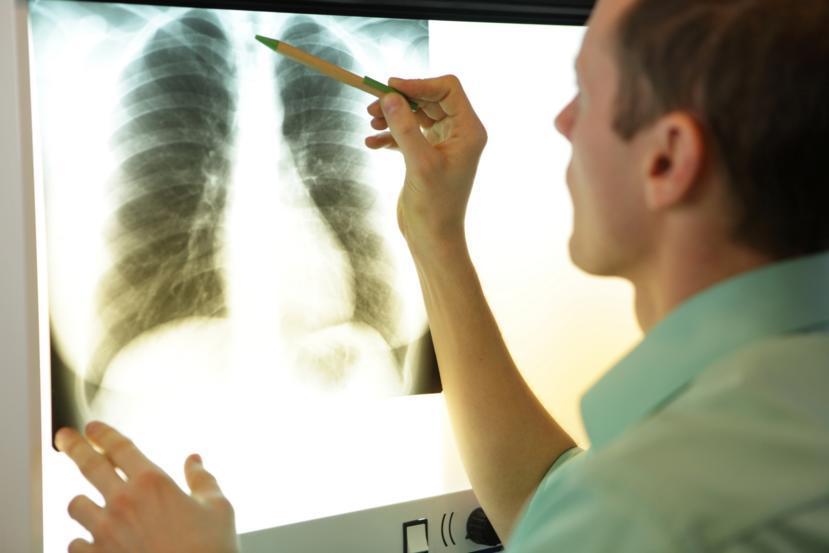What Is the Xiphoid Process?

Introduction
The xiphoid process is the smallest part or structure of the breastbone. The structure is made of cartilage at birth, but tends to develop into a bony structure when an individual reaches adulthood. It is situated from where the lower ribs are attached to the breastbone. The pointed end of the xiphoid process looks similar to a sword. The xiphoid process is very small and attaches the large muscles, which make up the floor of the diaphragm.
The xiphoid process is found in the lowermost portion of the sternum (breastbone). It is a small outgrowth or projection situated in the sternum's lowest end. It is triangular in shape with a pointed caudal end. The term originates from the Greek word xiphos, which means straight sword. The tapered portion of the bone is also called by any of the following names:
- Ensiform process
- Xiphisternum
- Ensiform cartilage
- Xiphoid cartilage
- Metasternum
Location and Structure
The xiphoid process is at the 9th thoracic vertebral level or just below the nipple line, which is in the middle of the chest.
Below are the details regarding the xiphoid process structure:
- Upper End: The upper portion of the xiphoid process structure meets the middle sternum part at the xiphisternal joint. This upper portion of the xiphoid process is said to have a demifacet at a lateral angle, which tends to articulate along the 7th coastal cartilage with the same kind of facet of the sternal body.
- Lower End: Also known as the tip, the lower end is known to provide attachment to the linea alba. Attached to the lateral borders are the aponeurosis of the internal obliques and the transverse abdominal muscle.
- Posterior Surface: This surface provides attachment to the lower portion of the sternocostalis muscle as well as the diaphragm's sternal origins. The posterior surface’s subdiaphragmatic portion is known to be related to the liver's left lobe, which is slightly left of the falciform ligament. In certain instances, the foramen of Morgagni is present in the absence of diaphragm slips.
- Anterior Surface: In the case of the anterior surface, it tends to attach to the slip of the rectus abdominis (abs), which is along with the aponeuroses of the external and the internal oblique muscles.
Functioning
The xiphoid cartilage serves as a very important site for the attachment of the following muscles:
- Transversus Thoracis Muscle: This is a flat muscle, which is composed of transverse fibers known to line the anterior as well as the lateral walls of the abdominal cavity.
- Diaphragm: This is basically a thin sheet of skeletal muscle that has a dome shape, which separates the chest cavity and the abdomen for normal respiration.
- Rectus Abdominis Muscle (Abs): It is a paired vertical muscle of the anterior abdominal wall, which supports the muscles of the spine when strenuous activities are carried out by an individual. It also facilitates regular movements of breathing. The most significant role of this muscle is that it keeps the intestines and other abdominal organs intact.
Xiphoid Process Pain
Pain that is experienced below the breastbone is called as xiphoid process pain, which is described as tenderness or dull pain in the area. It is also called as xiphoidalgia, xiphoid syndrome, or xiphodynia.
However, there have been controversies about the xiphoid process pain. There are physicians who claim that the condition is a commonly overlooked condition, while others believe that it is a type of a rare disorder. Although it may have a straightforward diagnosis, its symptoms often resemble other medical conditions such as abdominal or thoracic diseases. For this reason, the condition can be often misdiagnosed.
Xiphoid process pain is caused by a disorder in the musculoskeletal system. Reflective or referred pain may be present, which is one of the reasons for a misdiagnosis. Sometimes, pain can be felt in the shoulder area.
Symptoms
Xiphoid process pain is said to occur due to different reasons. The severity of the pain can range from mild, moderate, or severe in certain cases. The pain is usually felt in the lower portion of the sternum, which is the bone that makes up for the middle portion of the ribcage. For certain individuals, the pain can be described as a kind of pressure or tightness in the chest. Apart from pain, there are also other symptoms experienced such as upper abdominal pain and pain in the back. In certain cases, some people would also notice a lump or some kind of swelling in this region.
The symptoms of xiphoid process pain include:
- Pain, tenderness, or discomfort in the shoulder and chest regions
- Nausea
- Vomiting
- Pain in the abdominal region
- Pain or discomfort in the epigastric region
- In certain cases, the pain can also radiate to the back region
Causes
Xiphoid process pain may have several possible causes. This kind of pain can also be felt after experiencing an accident that caused chest trauma. The accident can damage the xiphoid process structure and causes it to break or bend.
Damage is also known to occur due an incorrect cardiopulmonary resuscitation or CPR. It can also occur because of too much pressure applied during resuscitation. Cardiopulmonary resuscitation, however, is mostly carried out to save lives of individuals. When the xiphoid process is broken, it leads to an increase in the inflammation, thereby leading to tenderness and pain in the chest.
An individual may also experience pain due to acid reflux. This happens when the stomach acid goes back up into the esophagus. An acid reflux can irritate the esophagus lining, which is located just behind the sternum. Xiphoid pain is also said to occur along with other kinds of reflux symptoms.
Any hard blow to the chest can also lead to a xiphoid process fracture, which may ultimately result in intense chest pain. Other causes of xiphoid process pain would include:
- Excessive eating
- Heart problems
- Lifting heavy weights
- Underlying medical conditions
- Carrying out repetitive or strenuous activities
- Medication side effects
- Lifting heavy objects or weights
Lump Present in the Sternum
The sternum or breastbone is essential for the attachment of the ribs. It is known to vertically run along the midline of the upper portion of the body. The structure of the sternum begins from the sternal notch or at the base of the throat and ends with a bony and cartilaginous protrusion called the xiphoid process. The lump present in the sternum is not usually due to a serious medical condition such as a tumor growth. However, it is recommended to consult a doctor if you notice any suspicious lumps in your chest.
Diagnosis
If the xiphoid process pain has occurred due to a minor trauma, then it would probably resolve on its own. However, make sure to visit the doctor if the pain does not go away even after a couple of weeks or if it tends to worsen. The doctor will check if there are lumps present near the breastbone. Aside from carrying out a physical examination, the doctor would also ask certain questions about any recent trauma or other symptoms you have been experiencing such as pain in the chest or coughing.
In certain cases, the presence of a lump near the xiphoid process can often be mistaken for a hernia or tumor. To get an accurate diagnosis, the doctor may schedule an imaging test of the lower section of the breastbone. An X-ray would also help reveal any damages to the xiphoid process. Additional diagnostic tools would include carrying out an MRI or a CT scan to effectively identify inflammation, masses, and other abnormalities.
Treatment
The treatment for xiphoid process pain completely depends on its underlying cause and the severity of the symptoms. Most of the time, the symptoms usually occur after a recent trauma, which can either be mild or severe. Doctors usually prescribe anti-inflammatory drugs to provide pain relief. An alternating hot and cold therapy to the affected area may also be recommended. Doctors may also suggest limiting certain activities until the injury is completely healed.
If the cause of the xiphoid process pain is acid reflux, then individuals may need to bring about certain changes in their diet to reduce acid reflux. In such cases, individuals should eat in small portions around 5-6 meals throughout the day. Certain food items that can trigger an acid reflux should also be avoided such as chocolates, tomatoes, alcohol, and peppermint. Acid reflux can also be managed by taking an over-the-counter or prescription drug that can reduce the production of stomach acid.
Surgery
The xiphoid process has a specific role in the body. Hence, a broken xiphoid process can lead to serious trouble to the organs, which would include puncturing of the internal organs. In certain cases, surgery may be recommended by the doctor. However, surgery should only be considered as a last resort when other treatment options fail to provide good results.
The doctor may need to carry out an incision along the base of the xiphoid process. With the help of electrosurgical dissection, the surgeon would need to cut as well as release the exposed xiphoid process from the sternum. To further stop the bleeding, the doctor would need to use electrocoagulation or electric currents.
After surgery, the patient may complain of bruising. There would also be instances of tenderness until the wound gets completely healed. Recovery from surgery usually depends on each individual. However, patients may be able to resume doing normal activities within a few weeks.













